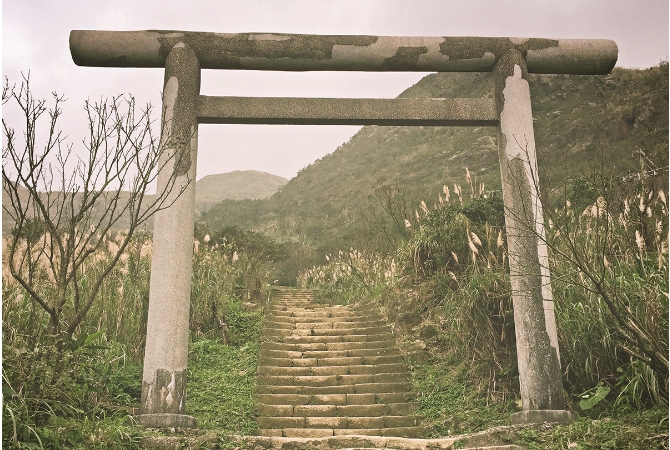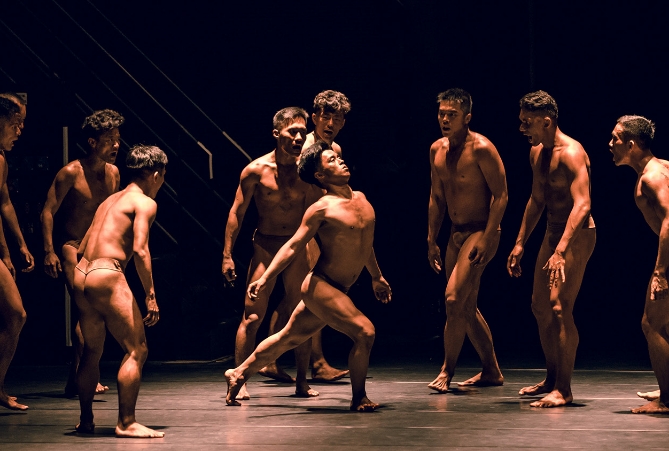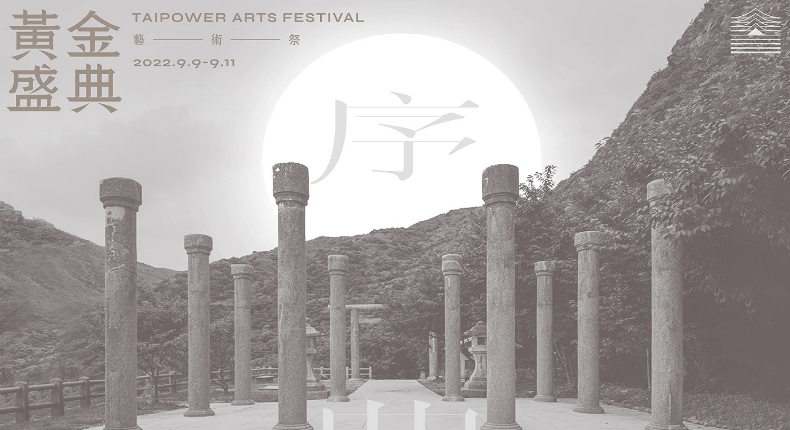In the late 1980s, as gold and copper mining decreased and Taiwan Gold Corporation ceased operations, Taipower gradually took over the remaining mining facilities located in Ruifang, New Taipei City. Over time, some of these sites have been designated as municipal historical sites or historic buildings by local governments. In recent years, Taipower has actively engaged in the preservation of cultural heritage and combined it with public art to promote diversified local development. An excellent example of this can be found in the grand event – the Illuminating Thirteen Levels Ruins exhibition – held on Mid-Autumn Festival night in 2019.
Taipower's cultural assets in the Jinshui area include the Lile Copper Refinery, the Jinguashi Shrine, the Taizi Guesthouse which is currently undergoing restoration, the Shuinandong Smelter, and flue pipes at the Taiwan Gold LianDong Copper Refinery. In 2017, Taipower initiated a project to restore the Jinguashi Shrine, where architect Zhang Xingjie used a method of preserving the remnants and protecting the pillars from collapsing to protect the historic shrine. During the process, valuable artifacts such as the first-generation shrine torii gate, and stone lanterns were discovered. Additionally, reference was made to historical documents and over a hundred cherry blossom trees were planted along the pilgrimage path. After five years of restoration work, the project was successfully completed, allowing the Jinshui area to follow the success of the Illuminating Thirteen Levels Ruins event and once again shine with splendor.

Reviving the Shinto Shrine’s Remnants with Augmented Reality (AR)
The Jinguashi Shrine was established in 1898 and underwent renovations in 1936. It was the third shrine built in Taiwan and served as an important religious landmark in the Jinguashi area at that time. During World War II it suffered damage and only two torii gates, a few stone lanterns, and the foundation and pillars of the shrine's main hall remain. In 2007, it was designated as a municipal historical site by the Taipei County government (now New Taipei City).
To allow people to experience the past glory of Jinguashi Shrine, Taipower invited technological art teams such as RUMU Innovation and the Japanese architectural scholar Professor Kenji Horigome to combine over a hundred years of historical architecture with modern digital technology. Through augmented reality (AR) technology, they were able to recreate vanished historical scenes, including the first wooden torii gate, flags, and the sacred lamps of the second-generation shrine. Visual artist Yan Bojun designed the main visuals which depict imagery of the bright, rising moon to showcase Jinguashi's splendor. Limited edition theme masks and fans, designed by Yan Bojun in collaboration with Taiwan Beer, will also be distributed at the event.
Encountering the Beauty of a Century
During the last Mid-Autumn Festival holiday, Taipower launched a Golden Gala Art Festival in conjunction with the revival of the century-old shrine. The first day of the festival featured a ceremony inaugurating the shrine, followed by a performance by the Boma Theater. The theater group, renowned for its coverage in The New York Times, gave a performance titled "Encountering the Beauty of a Century." Dancers led a procession along the shrine's approach and ascended to the remains of the shrine. On the following evening, the renowned choreographer Bulairen Pagelle, recently honored with a National Arts Award, led the Bulareyaung Dance Company in their first outdoor performance of the grand production "Road Calls." The performance also featured collaboration with local residents who set up stalls, fostering a sense of community participation. Additionally, local specialty drinks and snacks were available, including specially crafted beverages showcasing the flavors of Jinguashi. During the three-day art festival, guided tours of the Jinguashi Shrine cultural heritage site were provided by the restoration and AR teams, along with cultural heritage expert Professor Kenji Horigome, who introduced the restoration process and offered an AR experience that recreated the century-old historical site. Master craftsman Li Long hosted a workshop on the art of grass weaving, a nationally treasured craft. Dance workshops by the Boma Theater and Bulareyaung Dance Company were available, allowing participants to experience the golden years of the Jinguashi mines through their different senses.
During the preparation period, Taipower extensively visited district offices, police stations, schools, temples, and community leaders to establish cooperation and build closer connections with the local community. They actively engaged in joint public relations efforts in the Keelung region and deployed over a hundred personnel to ensure the smooth operation of the event. Effective traffic management measures were implemented to handle the influx of thousands of people, and over a hundred participating VIPs praised the warm reception and excellent organization. The event received extensive and in-depth coverage from mainstream media outlets.

 |
A tight scheduleThe restoration of the Jinguashi Shrine faced delays due to the ongoing discovery of cultural artifacts from the Japanese colonial period. The restoration unit, Taipower, was informed that the project would be completed in mid-July 2022. Considering the shrine's long closure and the climate conditions in Jinguashi, the art festival was scheduled during the Mid-Autumn Festival holiday, allowing less than three months for preparation. |
 |
No outsourcing of event PRDue to the tight schedule, there was not enough time to engage an event PR company. Ultimately, the company relied on collaboration between different departments to complete the preparations. |
 |
Large-scale procurementIn addition to the existing public art business, a significant amount of additional procurement was conducted to enhance setup efficiency. |
 |
VIP reception and itinerary arrangementsOver 250 VIPs were invited to the art festival, with many of them bringing their friends and family. It was necessary to plan and respond on-site to the VIPs' schedules, movements, and dining requirements, starting from the inauguration ceremony in the afternoon until the outdoor performance in the evening. |
 |
Addressing unforeseen situationsAny unexpected situations outside of the planned processes were immediately reported by the respective teams and addressed accordingly. |



